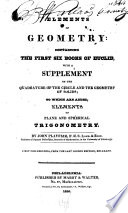 | Euclid, John Playfair - Euclid's Elements - 1826 - 326 pages
...'.'. BE : BG, (2. 6.) that is, the sum of the two sides of the triangle ABC is to their differenee as the tangent of half the sum of the angles opposite to those sides to the tangent of half their differenee. QED PROP. V. THEOR. If a perpendieular be drawn... | |
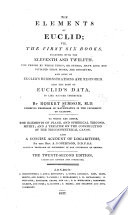 | Robert Simson - Trigonometry - 1827 - 546 pages
...them, in a plane triangle, any three being given, the fourth is also given. PROP. III. FIG. 8. In a plane triangle, the sum of any two sides is to their...difference, as the tangent of half the sum of the angles at the base, to the tangent of half their difference. Let ABC be a plane triangle, the sum of any two... | |
 | Dionysius Lardner - Plane trigonometry - 1828 - 434 pages
...plane triangle are as the sines of the opposite angles. (73.) The sum of two sides of a plane triangle is to their difference as the tangent of half the sum of the opposite angles to the tangent of half their difference. •* ^74.) Formulae for the sine, cosine,... | |
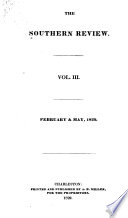 | 1829 - 536 pages
...first of these cases is shewn to depend on the theorem, that, " the sum of two sidi\s of a triangle is to their difference, as the tangent of half the sum of the opposite angles to the tangent of half their difference." This half difference added to half the sum,... | |
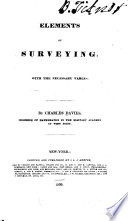 | Charles Davies - Surveying - 1830 - 390 pages
...should obtain, THEOREM. 44. In any plane triangle, the sum of tfte two sides containing either angle, is to their difference, as the tangent of half the sum of the other two angles, to the tangent of half their difference. Let ABC (PI. I. Fig. 3) be a triangle ;... | |
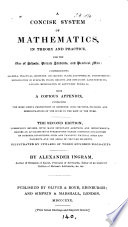 | Alexander Ingram - Mathematics - 1830 - 458 pages
...sura. PROP. XXXIX. In any triangle ABC, of which the sides are unequal, the sum of the sides AC + AB is to their difference as the tangent of half the sum of the opposite angles B and C, to the tangent of half their difference. CA + AB : CA — AB : : tan. £ (B... | |
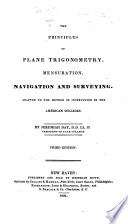 | Jeremiah Day - Measurement - 1831 - 520 pages
...equal to the sum, and FH to the difference of AC and AB. And by theorem II, (Art. 144.) the sum of the sides is to their difference; as the tangent of half the sum of the opposite angles, to the tangent <if half their difference. Therefore, R :tan(ACH-45°)::tan|(ACB +... | |
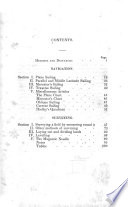 | Jeremiah Day - Measurement - 1831 - 394 pages
...therefore, from the preceding proposition, (Alg. 389.) that the sum of any two sides of a triangle, is to their difference ; as the tangent of half the sum of the opposite angles, to the tangent of half their difference. This is the second theorem applied to the... | |
 | John Radford Young - Astronomy - 1833 - 286 pages
...I<; consequently, from the equation above, n + 4 tan. a — 4 ~~ tan. J(A — B) ' that is to say, in any plane triangle the sum of any two sides is...their difference as the tangent of half the sum of the opposite angles is to the tangent of half their difference. By help of this rule we may determine the... | |
 | John Radford Young - Astronomy - 1833 - 308 pages
...of two arcs to find the sine and cosine of their sum and difference . . .19 ARTIcLE. PAGE 19. In a plane triangle the sum of any two sides is to their difference as the tangent of half the sum of the opposite angles to the tangent of half their difference . . . .21 20. Formulas for determining an angle... | |
| |